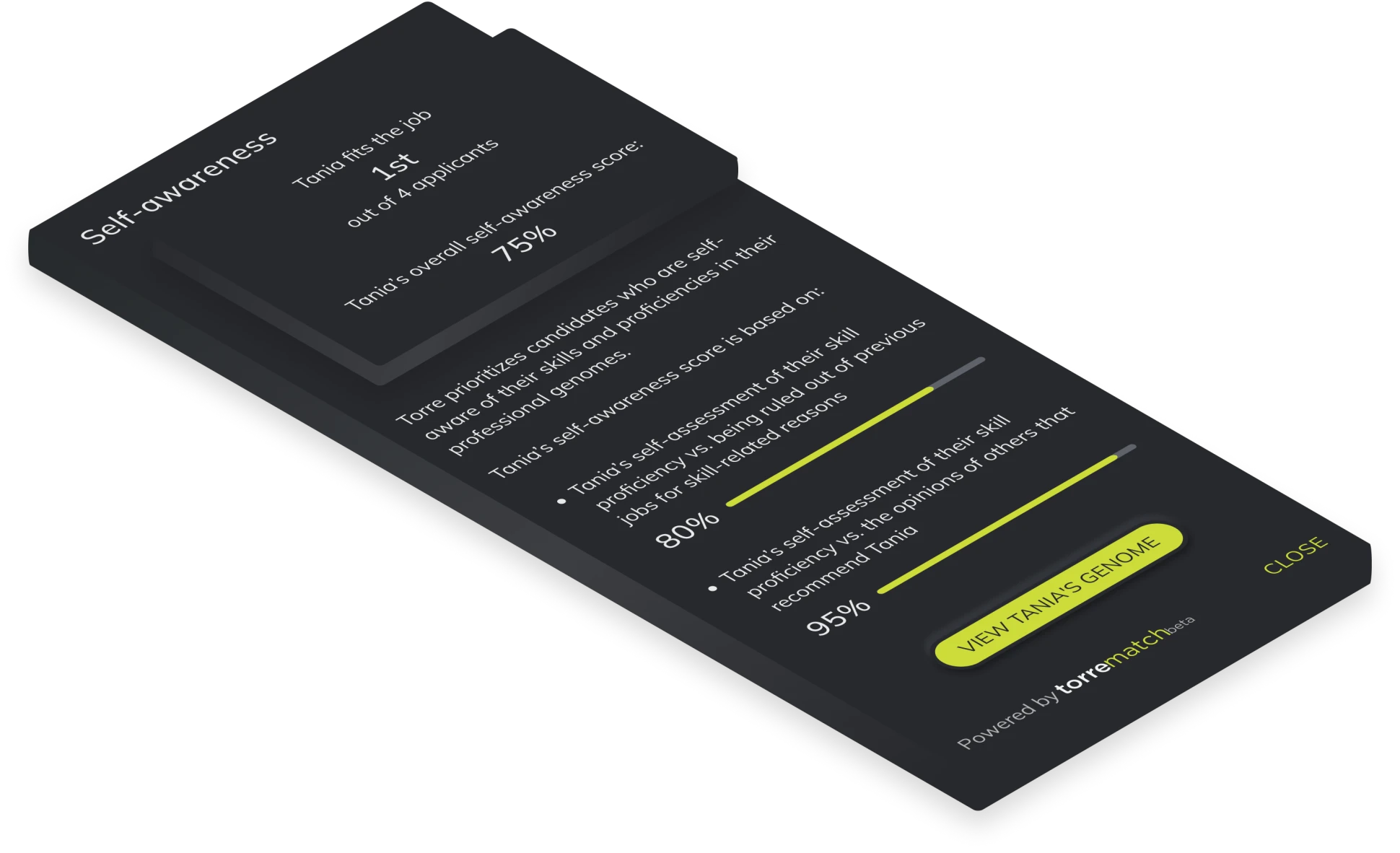
The purpose of the self-awareness factor is to validate if candidates understand what they have to offer in their profile and if the genome is providing value on the job posts they applied to.
For this factor we take into account disqualifications and recommendations.
This factor by itself has the goal of validating the entire genome data so no further data validation is done.
5.4.4.
Algorithm validation
- Daily and weekly metrics
- Editorial reviews
- Direct feedback from talent seekers
- Direct feedback from candidates
The self awareness score comprehends three different factors, all of them with their own algorithm.
- $disqualificationsScore
- $skillsRecommendationsScore
5.4.5.1.
DisqualificationScore
An initial positive event with score 1 and weight 1 is provided for every user.
We take into account all the historical disqualifications / events for the user and their weights.
These disqualification events can be negative, neutral and positive.
Positive: Stronger candidates, getting hired.
Neutral: Incomplete Genome, Screening Questions, Other.
Negative: Skills required, Language required.
We calculate a decaying factor based on how recent an event is
We calculate the weighted average of all the disqualifications with their respective decaying factor, including the initial positive event.
If the candidate has no disqualifications, we return null.
5.4.5.2.
SkillRecommendationScore
Having $skillsWithProficiencies as the candidate’s skills and proficiencies.
Get $recommendedSkills with their proficiencies, from users that recommended the candidate by up to 3 skills per recommendation.
Filter $recommendedSkills to only use the ones that the candidate has.
Calculate $awarenessCoefficient between candidate’s $skillProficiency and $recommendedSkillProficiency
Final score is 1.0 - absolute value of the average of all the $awarenessCoefficient values.
- If the user has no recommended skills, we return null.
The final score is an average of the previous defined values, ranging between 0 and 1.
If every score is null, we return 1.
5.4.6.
Mathematical description
It seems there was an issue with the formatting of the equations. Let's correct that for clarity:
5.4.6.1.
Disqualifications score
- E: Set of historical disqualification events (including positive, neutral, negative) with their weights.
- E_init: Initial positive event (score 1, weight 1).
- decay(e): Decay function for event e based on recency.

5.4.6.2.
Skills recommendations score
- S: Candidate’s skills with proficiencies.
- R: Recommended skills with proficiencies from users.
- awarenessCoefficient(s, r): Function to calculate the awareness coefficient for a candidate's skill s and recommended skill r.


In this corrected representation, the equations are better formatted, and each case within the piecewise functions is clearly defined.



